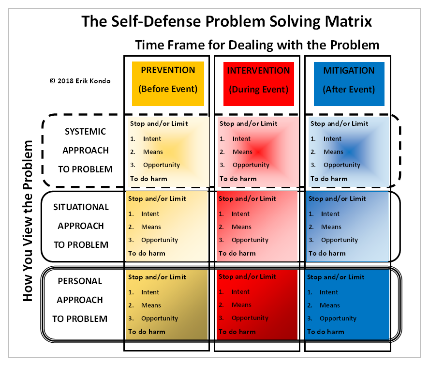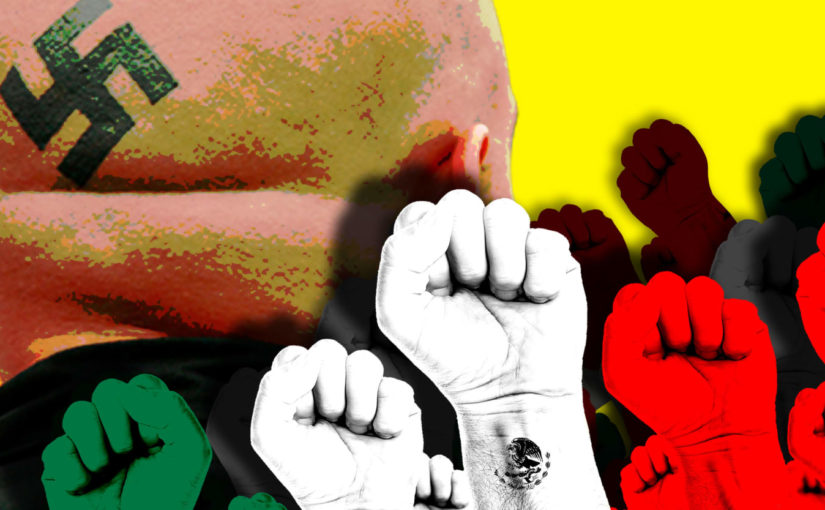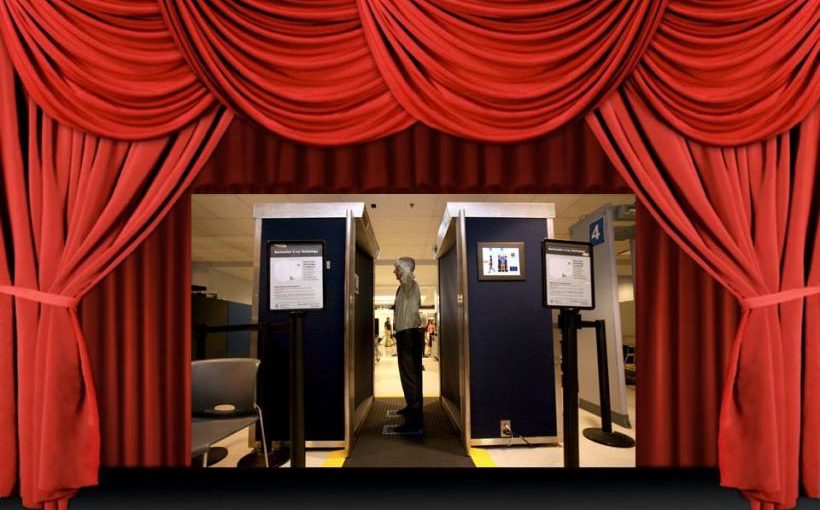You have heard it jokingly said that you can’t fix stupid. I have taught martial arts and self-defense at a small liberal arts university for 20 years, so the joke about me trying is too easy. Rather, this article is about a fallacy that I see gaining an increasing foothold in the enlightened minds of university circles that is more futile than fixing stupid. And that is trying to educate predation out of predators.
In my self-defense course we cover boundary setting and use a role play for illustration (this will sound familiar to FAST Defense alumni). In the scenario a timid woman is at the company office party when the sleazebag makes his move. Reading no verbal or body language cues to suggest a boundary, the guy invades space and ultimately forces a hug upon her as she tries to cower away. We pause, and I ask the class, “What went wrong?”
One girl, clearly indignant on behalf of the woman who was just slimed, raises her hand and answers, “He clearly didn’t recognize she was uncomfortable with his presence.”
“You think this class is about fixing the douchebags of the world, let alone just all the clueless men? And no, he absolutely recognized her discomfort, he just didn’t care.” This is just one example of students thinking the solution to aggression is fixing or educating the predator.
One night at this same university, a safety alert text was issued that a date rape drug had been used on campus and urged everyone to exercise caution. An opinion piece in the school paper took issue with the text and called it victim blaming. This lauded editorial insisted that the safety alert should not have been telling women to be careful, it should have been reminding men not to drug women. For comparison, the article pointed out that the PSAs for drunk driving don’t warn motorists to be careful of drunk drivers, but rather bluntly tell people not to drink and drive. But I wonder if the high functioning alcoholic really cares? Nor does the rapist care about a text.
The article goes on to assert more time needs to be spent educating men not to rape women and less time educating women how to avoid it. Perhaps that is a worthwhile social goal, but it is a horrible self-defense strategy. What college age male doesn’t know that society frowns upon drugging and raping women? Based on that logic I can fix the campus rape problem in five minutes. On the admission application, add an additional question: is it ok to drug and rape women (check the box yes or no.) If they check “yes,” don’t let them into the school! Problem solved, they don’t meet the educational standards of the university. So apparently the real problem must lie in the admissions office, because they keep letting rapists in!
Or maybe it is that some people don’t give a crap and are going to take what they want anyway. Too many people, however well intentioned, spend too much time and mental effort complaining that someone needs to educate the predators and not nearly enough time preparing to deal with the predators who choose to flunk the lesson.
This same issue applies to other conflict as well. Just recently at the same university, racist remarks were written on a bathroom stall and other public areas of campus. The student body, faculty, and alumni went into an uproar and demanded the administration and the university “do more.” I asked a Chinese student , who was clearly agitated by a bunch of words she only heard second hand about, what exactly constituted more? The first words out of her mouth were “more education.” Now trust me when I say that students at this school are constantly bombarded by messages of inclusion and diversity. But we need more. Because apparently some young adults never got the memo that racism is not ok. Again, I would cheekily assert that you have an admissions problem, not an education problem. Add another question: is racism ok? (check yes or no).
Obviously there are way too many people in the world who still check yes. But it isn’t because no one ever told them racism is wrong. I am sure they have heard it plenty. Most simply choose to ignore the message or vehemently disagree. You can’t fix stupid. And you can’t educate assholes who refuse to learn.
On a grander, societal level, these are very important questions to be discussed. Should we continue to combat and expose racism? Every decent person agrees. Should we get to the root causes of violence against women and do a better job of eliminating them? Unquestionably. Should we resign ourselves to the fact that people can’t change for the better, and that every predator is doomed to a life of recidivism and beyond help? Of course not. These are worthwhile goals for society, but I am pessimistic we will ever see them in our lifetime.
And in the meantime, they have nothing to do with personal protection in your everyday life. When the violent predator is standing in front of you, does it matter if he is there because of genetics, various sizes of parts of his brain, the amount of fish in his diet, upbringing or childhood, or any other host of indicators? None of it matters or helps you in the next few, most traumatic minutes of your life.
Like the one girl who thought a chunk of my self- defense class was supposed to be spent talking about how we need to teach 10-12 year old boys that “No” means “No.” When the predator is in front of you, are you going to have meaningful dialogue and dissuade him of his opinion that what he is about to do shouldn’t be done? Do you want to be armed with skills to deter or defeat him, or do you want to be armed with only rhetoric? I hope I educated the education mindset out of her, or then again, maybe what they say is true and you can’t fix stupid.










